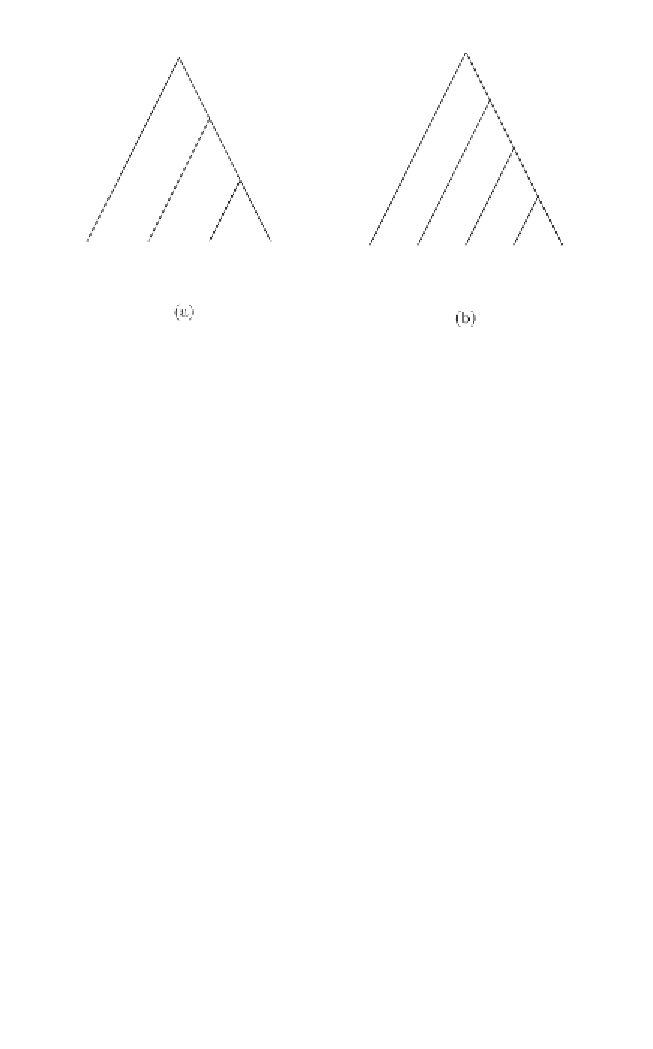Biology Reference
In-Depth Information
Mamm.
Squam.
Mamm. Squam.
Chelon.
Aves
Chelon.
Croc.
Croc.
Fig. 14.
(a) The grouping of Chelonia (turtles), Squamata (snakes and lizards),
and Crocodilia as reptiles forms a monophylon; but this grouping cannot be consid-
ered holophyletic, since the Aves taxon (birds) is missing (see (b)).
fish (
Osteichthyes
) are defined to include
Actinopterygii
,
Crossopterygii
(the living-fossil coelacanth), as well as
Dipnoi
(lung-fish), and to exclude
Tetrapoda, which are bony but not fish. However, lungfish and coela-
canths are phyletically nearer to tetrapods than either is to actinoptery-
gian fish, so the
Osteichthyes
taxon is a paraphylon. Nevertheless, it is a
taxonomically useful grouping, marking the evolutionary and anageneti-
cally important boundary between fish with a more or less bony skeleton
and strictly cartilaginous
Chondrichthyes
.
4.6.2. Convergence and reversion polyphylons — Unacceptable
A polyphylon is a grouping of taxa based on some evolved characteris-
tic(s) which is indeed shared, but has appeared at several distinct times in
evolution. As seen in Sec. 2.4, a homoplasy is the presence of a character
state in various taxa that is not due to common ancestry. Accordingly, a
phylogenetic grouping based on this character is polyphyletic. While
there are lots of cases of homoplasy in nature, groupings based on them
should be avoided: polyphylons are phyletically unacceptable.
Referring to the definition of homoplasy, one can differentiate
between convergence and reversion polyphylons. Let us consider the


